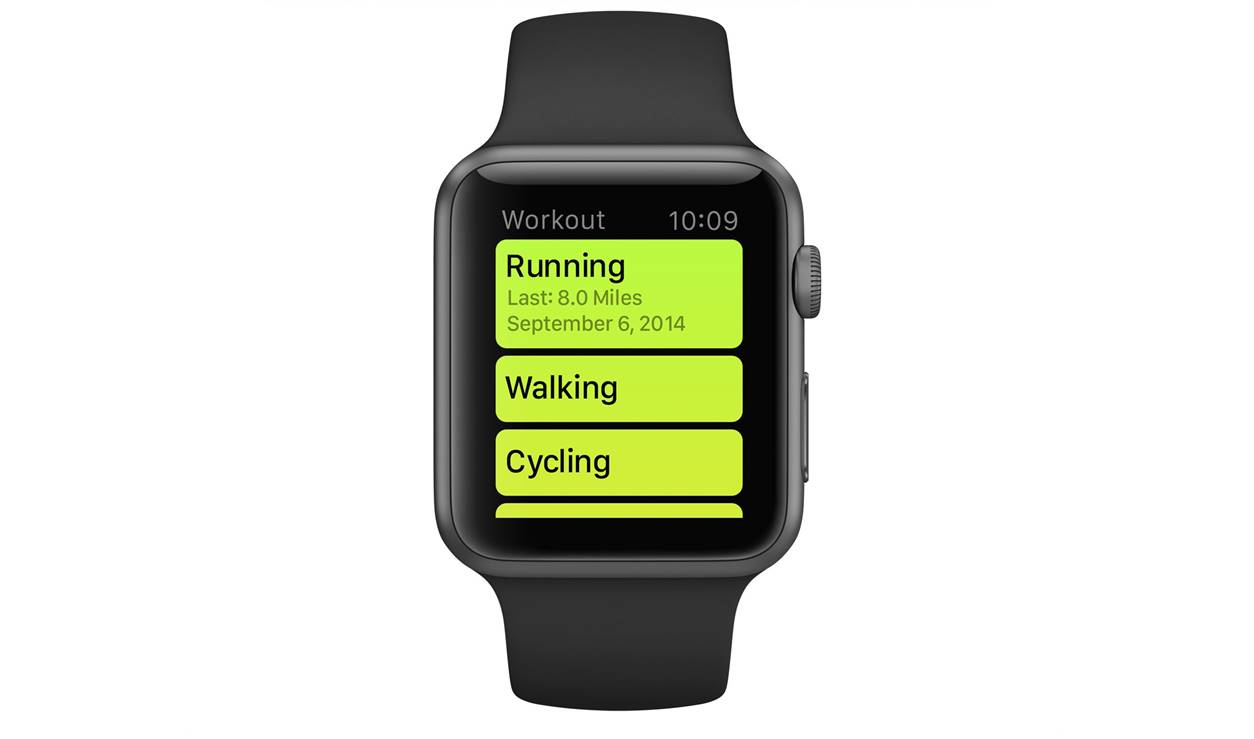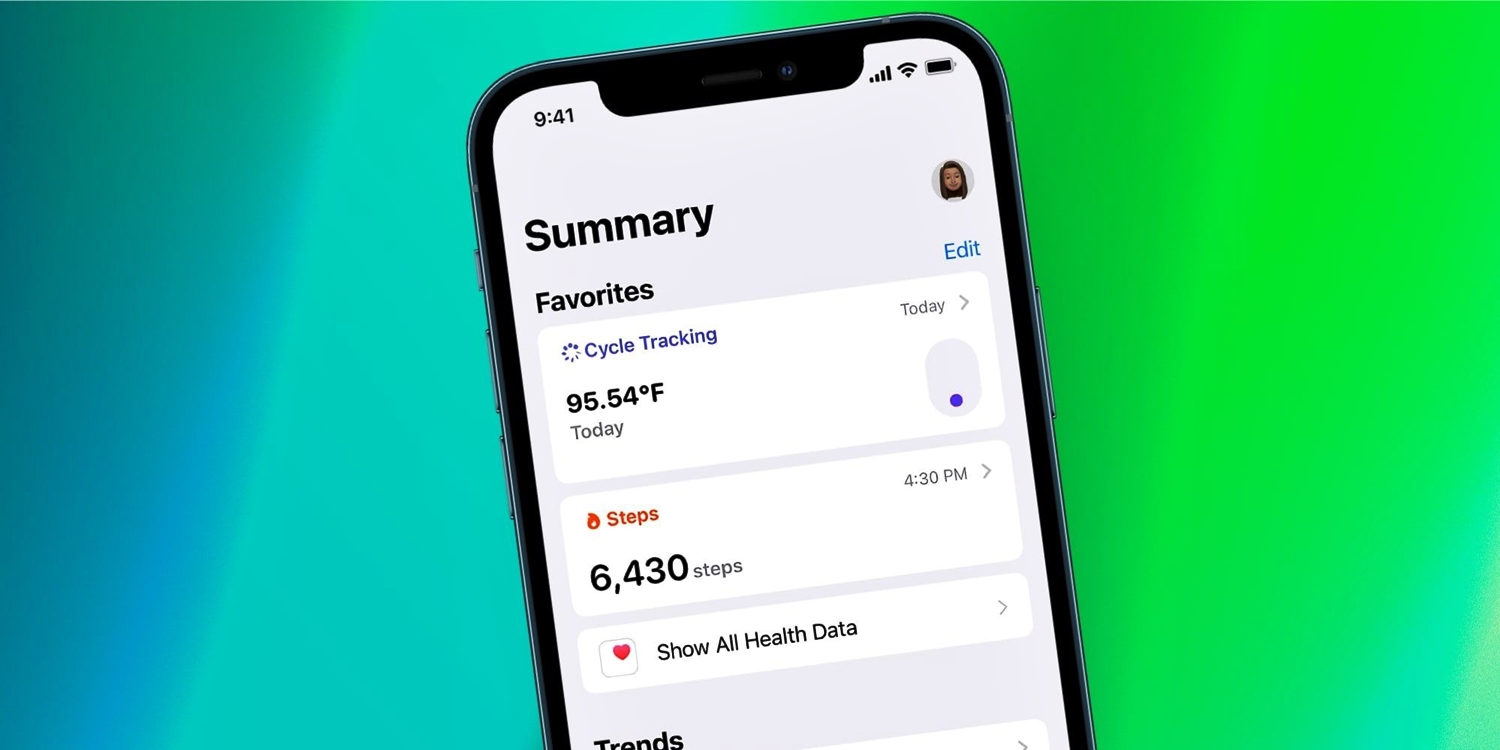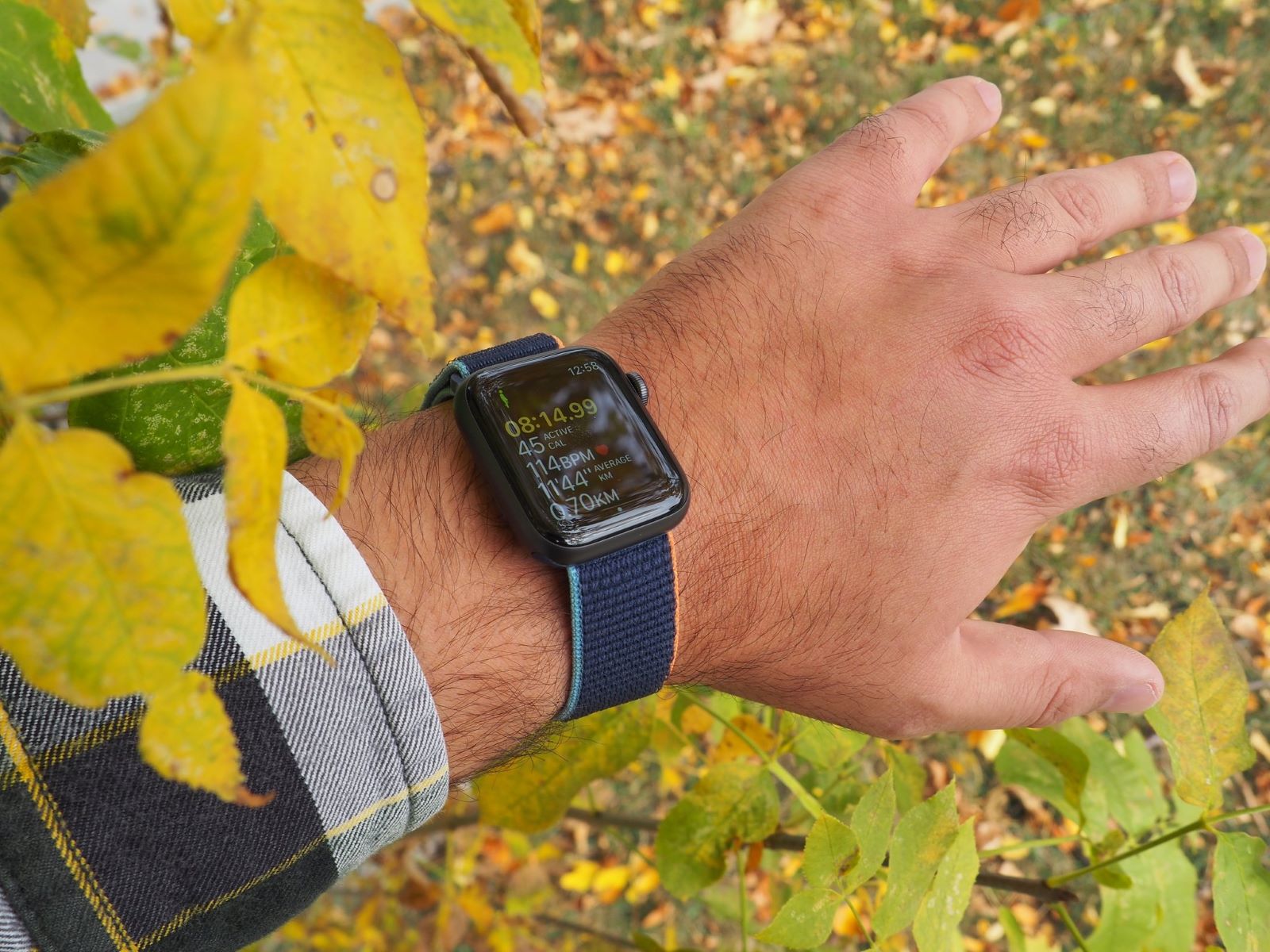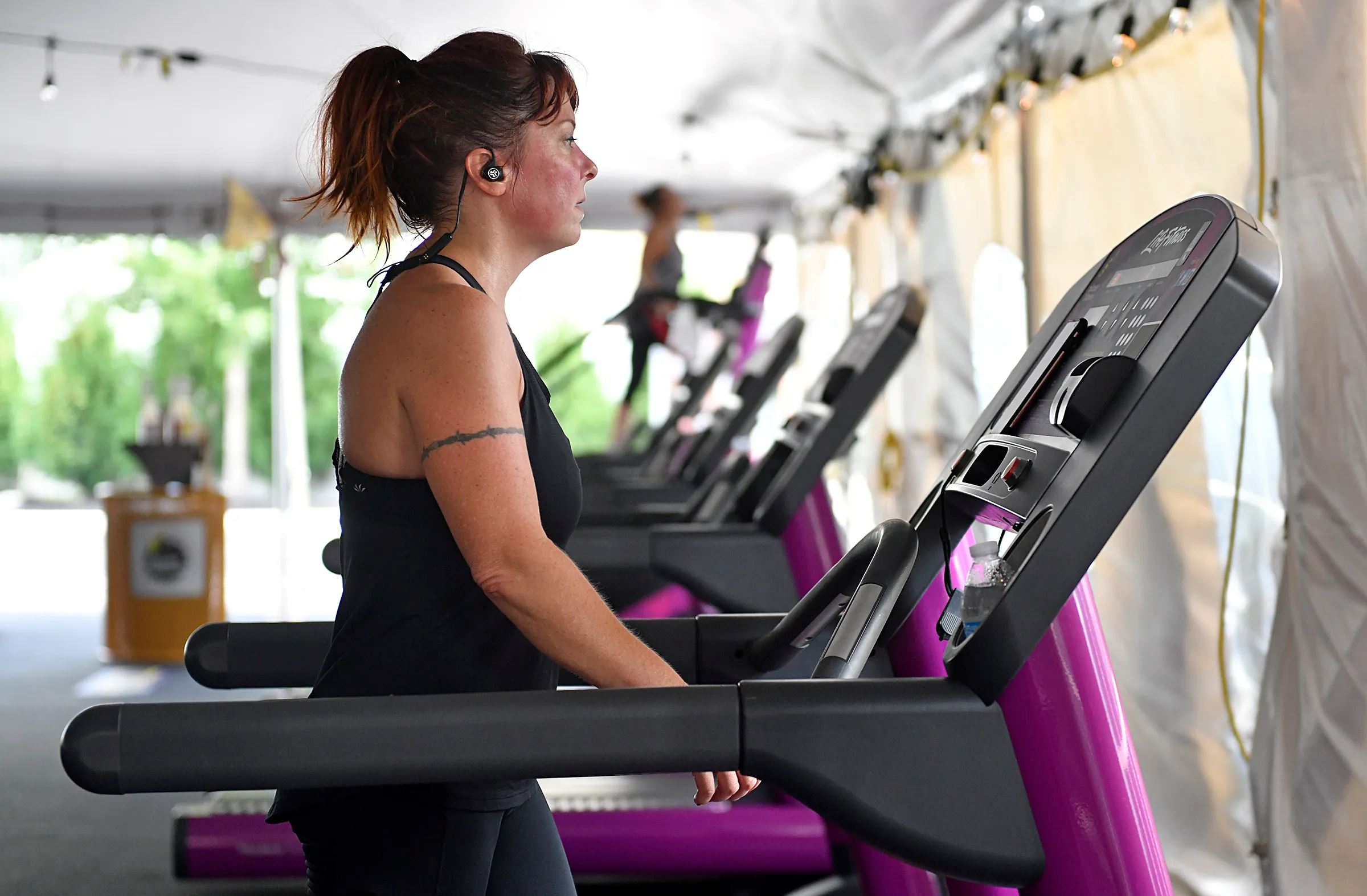

Featured
What Does Apple Watch Count As Exercise
Published: September 25, 2023
Want to know what activities your Apple Watch considers as exercise? Read this featured article to find out all the details and get the most out of your workouts!
Introduction
The Apple Watch has become a popular accessory for fitness enthusiasts and casual users alike. With its advanced technology and comprehensive health tracking features, the Apple Watch has revolutionized how we monitor and track our exercise activities. From counting steps and calories burned to measuring heart rate and analyzing workout intensity, the Apple Watch offers a myriad of exercise tracking capabilities.
But what does the Apple Watch actually count as exercise? With its sophisticated sensors and algorithms, the Apple Watch is designed to accurately identify and record various types of physical activities, providing users with detailed insights into their workout routines. Whether you’re going for a jog, practicing yoga, or dancing to your favorite tunes, the Apple Watch is capable of monitoring and quantifying your movements.
While the Apple Watch can be a valuable tool in tracking exercise, it is important to understand its limitations and consider other factors when evaluating your fitness progress. This article explores how the Apple Watch tracks exercise, the types of activities it can monitor, its accuracy and reliability, and the potential benefits and limitations of using the Apple Watch for exercise tracking.
So, if you’re curious about how your Apple Watch measures your fitness efforts or you’re considering purchasing one to enhance your exercise regimen, keep reading to learn more about the capabilities of this popular wearable device.
How does the Apple Watch track exercise?
The Apple Watch utilizes a combination of sensors, algorithms, and built-in workout tracking features to accurately measure and record exercise activities. The watch uses a combination of the heart rate sensor, accelerometer, gyroscope, and GPS (on GPS-enabled models) to capture and analyze data during workouts.
The heart rate sensor on the Apple Watch continuously monitors your heart rate, providing real-time information about your exercise intensity. By tracking changes in your heart rate, the device can determine whether you are engaging in light, moderate, or vigorous physical activity.
The accelerometer is another key component that measures motion and detects your movements. It can track steps, distance traveled, and even your pace during activities like walking or running. Additionally, the accelerometer is responsible for detecting different types of exercises, such as cycling or elliptical workouts.
The gyroscope in the Apple Watch helps measure orientation and rotation, providing valuable data during activities that involve movements in different planes, such as yoga, dancing, or Pilates. The gyroscope helps the watch understand your body movements and provides accurate tracking for these types of exercises.
For outdoor activities, the Apple Watch with GPS capabilities can use satellite signals to map your routes, measure distance and pace more precisely, and provide a detailed analysis of your exercise performance.
To further enhance the exercise tracking capabilities, the Apple Watch comes with pre-installed workout apps that cover a wide range of activities, including running, cycling, swimming, yoga, HIIT, and more. These apps utilize the sensors and algorithms to automatically detect and track specific exercises, providing you with detailed metrics such as calories burned, average heart rate, and duration.
In addition to the built-in workout apps, the Apple Watch also supports third-party fitness apps, which offer even more specialized tracking features and customization options. This allows you to tailor your exercise tracking experience to your specific needs and preferences.
Overall, the combination of sensors, algorithms, and dedicated workout apps makes the Apple Watch a powerful exercise tracking device that can accurately monitor and record various types of physical activities.
Types of exercise activities tracked by the Apple Watch
The Apple Watch is designed to track a wide array of exercise activities, catering to different fitness goals and preferences. Whether you engage in high-intensity workouts or prefer low-impact activities, the Apple Watch has you covered. Here are some of the exercise activities that the Apple Watch can track:
- Running: The Apple Watch uses its accelerometer and GPS capabilities to track your distance, pace, and route during outdoor runs. It can also measure your heart rate, calories burned, and provide insights into your running performance.
- Cycling: With the Apple Watch’s built-in cycling tracking feature, your wrist companion can calculate your speed, distance, and routes using the GPS functionality. It also monitors your heart rate and provides valuable metrics to enhance your cycling experience.
- Swimming: Thanks to its water resistance and swim tracking capabilities, the Apple Watch can accurately record your swim workouts. It can detect your stroke type, count laps, measure distance, and even monitor your heart rate in the water.
- Yoga: The Apple Watch incorporates the gyroscope and heart rate sensor to track your yoga sessions. It can detect your body movements and provide insights into your heart rate variability, helping you monitor your relaxation and mindfulness during yoga practice.
- HIIT (High-Intensity Interval Training): The Apple Watch’s workout app offers a specific HIIT tracking mode, which utilizes the heart rate sensor and accelerometer to measure your intensity levels, calorie burn, and recovery periods during high-intensity workouts.
- Walking: The built-in step counter and accelerometer allow the Apple Watch to monitor your daily steps and distance covered during casual walks. It also tracks your heart rate and can provide insights into the intensity of your walking workouts.
- Strength Training: While not as accurate as specialized fitness equipment, the Apple Watch can still provide basic information during strength training workouts. It can track heart rate, estimate calorie burn, and monitor overall activity levels during weightlifting sessions.
- Dancing: The Apple Watch’s gyroscope comes into play when tracking dance workouts. It can analyze your body movements, detect different dance styles, and provide insights into calorie burn, heart rate variability, and overall activity levels.
These are just a few examples of the exercise activities that the Apple Watch can track. The device is continuously updated with new features and workout modes, allowing users to explore and monitor various exercise routines to suit their fitness goals.
Accuracy and reliability of the Apple Watch’s exercise tracking
The accuracy and reliability of the Apple Watch’s exercise tracking features have been the subject of much discussion among users and fitness enthusiasts. While the device provides valuable insights into your workouts, it is important to understand its limitations and consider certain factors that may affect its accuracy.
First and foremost, it is essential to acknowledge that the Apple Watch is a consumer-grade wearable device and not a professional-grade fitness tracker or medical device. Although it incorporates advanced sensors and algorithms, it may not provide the same level of accuracy as dedicated fitness equipment or medical-grade devices.
The accuracy of the exercise tracking largely depends on the type of activity being performed. For activities that involve repetitive movements, such as running or cycling, the Apple Watch tends to provide more accurate measurements of metrics like distance and pace. This is due to its use of GPS and accelerometer technologies to track movements and calculate distance.
However, for activities that involve complex movements or are not easily quantifiable, such as yoga or weightlifting, the Apple Watch’s accuracy may be less reliable. In these cases, the device relies on its gyroscope and heart rate sensor to estimate the intensity of the exercise and calculate the calorie burn. Although it can still provide useful insights, the accuracy may vary depending on factors such as individual body movements, form, and technique.
Furthermore, the fit and placement of the Apple Watch on your wrist can also affect its accuracy. It is important to wear the watch securely and snugly on your wrist to ensure proper contact with the skin and optimal sensor readings. A loose or improper fit may result in inaccurate measurements, especially for heart rate monitoring.
Additionally, it is worth noting that the Apple Watch’s exercise tracking features are primarily focused on cardiovascular activities and may not be as effective at accurately tracking non-cardiovascular exercises or activities that do not involve continuous motion.
Despite these limitations, the Apple Watch has undergone significant improvements in accuracy over the years and continues to refine its exercise tracking capabilities with each new iteration. It is important to keep in mind that the device’s primary purpose is to provide general guidance and motivation for fitness activities rather than replacing professional equipment or specialized trackers.
Ultimately, while the Apple Watch can provide valuable insights and motivation for your exercise routines, it is important to interpret its data with consideration and to rely on additional sources of information, such as personal observations and professional guidance, to evaluate your overall fitness progress.
Benefits of using the Apple Watch for exercise tracking
The Apple Watch offers several benefits for individuals looking to track their exercise activities and improve their fitness levels. Here are some key advantages of using the Apple Watch for exercise tracking:
- Convenience and Accessibility: The Apple Watch is always on your wrist, providing easy access to exercise tracking and monitoring. With its intuitive interface and quick-start workout features, it allows you to seamlessly begin tracking your workouts without the need for additional devices or complicated setup processes.
- Comprehensive Activity Insights: The Apple Watch provides detailed insights into your exercise activities, including metrics such as heart rate, calorie burn, distance traveled, and more. This comprehensive data allows you to analyze your performance, track progress over time, and make informed decisions regarding your fitness routines.
- Motivation and Accountability: The Apple Watch’s exercise tracking features can be a powerful source of motivation. With personalized goals, achievement badges, and reminders to move, the device encourages you to stay active and reach your fitness targets. The ability to share your activity data with friends and participate in challenges adds a social aspect, fostering a sense of accountability and friendly competition.
- Goal Setting and Progress Tracking: The Apple Watch allows you to set specific exercise goals tailored to your fitness level and objectives. Whether you aim for a certain number of steps per day, a target heart rate, or a specific amount of exercise minutes, the device helps you stay on track and monitors your progress in real-time. This feedback is instrumental in gauging your performance and providing the motivation to push yourself further.
- Versatility and Customization: The wide range of supported exercise activities and the ability to customize workout screens and metrics makes the Apple Watch a versatile fitness tool. Whether you’re a runner, swimmer, yogi, or gym enthusiast, there are dedicated features and apps to cater to your specific needs. You can tailor the watch’s settings to suit your preferences and track the exercises that align with your fitness goals.
- Integration with Health and Wellness Apps: The Apple Watch seamlessly integrates with popular health and wellness apps, allowing you to centralize and consolidate your exercise and health data in one place. This integration enables a holistic view of your overall health and provides valuable insights into the connection between your exercise routines and other health metrics, such as sleep patterns, nutrition, and stress levels.
By leveraging these benefits, the Apple Watch can serve as a valuable companion in your fitness journey, helping you stay motivated, monitor your progress, and achieve your fitness goals.
Potential limitations and considerations when using the Apple Watch for exercise tracking
While the Apple Watch offers various benefits for exercise tracking, it’s important to be aware of its potential limitations and consider certain factors that may impact its effectiveness. Here are some key considerations to keep in mind when using the Apple Watch for exercise tracking:
- Accuracy and Reliability: While the Apple Watch strives to provide accurate exercise tracking, its measurements may not always be 100% accurate, particularly for activities that involve complex movements or non-cardiovascular exercises. It’s important to interpret the data with consideration and not solely rely on it for precise measurements.
- Battery Life: The Apple Watch’s battery life can vary depending on various factors, including usage patterns and settings. Long-duration workouts or relying heavily on the GPS function may drain the battery quicker. It’s essential to ensure the watch has sufficient charge or consider alternative methods of tracking for longer workouts.
- Surface Detection: The Apple Watch’s exercise tracking features may have limitations in accurately detecting certain exercises or movements, such as stationary exercises like weightlifting or exercises that require specialized equipment not compatible with the watch’s sensors. In these cases, tracking may be less accurate or not available.
- Personal Biometrics Variation: The accuracy of exercise tracking on the Apple Watch can be influenced by individual biometric variations. Factors such as wrist placement, skin contact, and individual physiological factors may impact the accuracy of heart rate readings and other measurements. Personal observation and awareness of your body’s responses are key to evaluating your exercise intensity.
- App Compatibility: While the Apple Watch supports various workout apps, not all apps offer the same level of accuracy or compatibility. It’s important to choose reliable and reputable apps that align with your specific exercise goals. Researching and verifying the accuracy and compatibility of third-party apps is essential for a more reliable exercise tracking experience.
- Environmental Factors: The Apple Watch’s exercise tracking may be influenced by environmental factors, such as weather conditions when using the GPS for outdoor activities or water resistance limitations during swimming activities. Being aware of these factors can help you interpret the data accordingly.
Understanding these limitations and considerations will help you make more informed decisions when using the Apple Watch for exercise tracking. It’s essential to use the device as a tool to complement your fitness journey and not solely rely on it for precise measurements or performance evaluations.
Conclusion
The Apple Watch is a versatile and powerful tool for exercise tracking, offering a wide range of features and capabilities to enhance your fitness journey. With its advanced sensors, algorithms, and dedicated workout apps, the Apple Watch can track various exercise activities, providing valuable insights into your performance, progress, and overall health.
While the Apple Watch is not without its limitations, such as accuracy variations and environmental factors, it serves as a convenient and accessible tool for individuals looking to monitor and improve their fitness levels. The device offers benefits like convenience, comprehensive activity insights, motivation, goal setting, versatility, and integration with other health and wellness apps.
By leveraging the strengths of the Apple Watch and considering its limitations, users can effectively track their exercise activities, set and achieve fitness goals, and make informed decisions for their overall well-being.
However, it’s important to remember that the Apple Watch should be viewed as a complement rather than a replacement for professional fitness equipment or medical devices. Personal observations, awareness of individual body responses, and consulting with healthcare professionals are crucial factors in interpreting and evaluating the exercise tracking data provided by the Apple Watch.
In conclusion, the Apple Watch is a valuable tool for fitness enthusiasts and those looking to lead a more active lifestyle. With its exercise tracking capabilities, convenience, and integration with other health apps, the Apple Watch can be a powerful companion in helping you achieve your fitness goals and improve your overall well-being.


